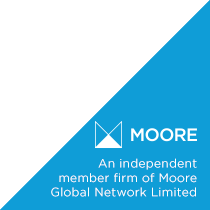How Farm Averaging Could Benefit Your Business

12 April 2023
This article first appeared in Farm North East.
Generally, across the farming sector we have seen an increased profitability over the last couple of years. This is good news, although it can also lead to increased tax liabilities. Fortunately, there are tax reliefs available to potentially reduce these liabilities, as well as potentially improving cash flow at the same time.
Farm Averaging is a valuable tool to reduce tax liabilities by averaging profits over a two or five year period. This is a relief available to farmers, as well as market gardeners involved in the husbandry of land and/or the rearing of livestock on a commercial basis for the production of food for human consumption. Farms where there are significant sources of other income, such as contracting, may not be able to use this relief as only farming profits are eligible for averaging.
The relief works by averaging taxable profits over the last two or five years and recalculating the tax payable for each of the previous years. The savings come from moving profits from years where profits are taxed at higher rates to years where the profit is taxed at lower rates. If higher rate tax had been paid in earlier years this can result in a tax refund, or reduction of the tax payable by pushing profits back into earlier years at lower rates instead of current higher rates. To make a claim for two year farm averaging, the difference in taxable profit between the two years requires to be greater than 25% of the profits of the higher year. For five year averaging, the difference in the last four years’ averaged taxable profit requires to be greater than 25% of the higher of the four year average or the fifth year profit. Any years where a loss was made are treated as nil for calculating averaged profits and automatically mean averaging is available and no reference to the 25% rule is required.
A Farm Averaging claim is made on your personal tax return of the latest of the tax years concerned, and an adjusting figure is included in that year’s tax return to account for the difference in tax in earlier years. Claims can be made by sole traders and partners in a partnership. Each partner is considered independently and not all partners need to apply averaging. Farm Averaging is not available to limited companies.
Below is an example of the difference that Farm Averaging can make.
Before averaging (Based on Scottish tax rates)
| Tax Year | 2017/18 | 2018/19 | 2019/20 | 2020/21 | 2021/22 | Total |
| Profits | 20,000 | 20,000 | 20,000 | 40,000 | 90,000 | 190,000 |
| Below Higher Rate Tax | 1,700.00 | 1,610.00 | 1,479.51 | 5,627.57 | 6,381.09 | 16,798.17 |
| Higher Rate Tax | 0.00 | 0.00 | 0.00 | 0.00 | 18,998.58 | 18,998.58 |
| NIC | 1,213.44 | 1,195.24 | 1,182.12 | 2,903.60 | 4,616.38 | 11,110.78 |
| Total Due | 2,913.44 | 2,805.24 | 2,661.63 | 8,531.17 | 29,996.05 | 46,907.53 |

After averaging (Based on Scottish tax rates)
| Tax Year | 2017/18 | 2018/19 | 2019/20 | 2020/21 | 2021/22 | Total |
| Profits | 38,000 | 38,000 | 38,000 | 38,000 | 38,000 | 190,000 |
| Below Higher Rate Tax | 5,300.00 | 5,210.00 | 5,210.07 | 5,207.57 | 5,192.07 | 26,259.71 |
| Higher Rate Tax | 0.00 | 0.00 | 0.00 | 0.00 | ||
| NIC | 2,833.44 | 2,815.24 | 2,802.12 | 2,723.60 | 2,717.48 | 13,891.88 |
| Total Due | 8,133.44 | 8,025.24 | 8,012.19 | 7,931.17 | 7,909.55 | 40,011.59 |
In this example, before Farm Averaging the total tax liability over the five year period was £46,907.53. After five year averaging, the total tax liability for the period reduces to £40,011.59 - a reduction of £6,895.94. Following averaging no profits are exposed to higher rate tax. Additionally, as a result of averaging, the payments on account for the 2022/23 tax year reduce from £14,918.72 to £3,875.47. This results in a significant cash flow saving of £11,043.25.
Farm Averaging can be of advantage where total income can be reduced to avoid a High Income Child Benefit Charge. It could also be used to free up the basic rate tax band to allow the lower rate of capital gains tax to apply.
It is worth considering whether Farm Averaging could bring about tax planning opportunities in the future. With increasing costs, it may be possible to average profits in the future to reclaim tax paid at higher rates. For example, if future profits are lower, or if a large equipment purchase qualifying for capital allowances is made, this can reduce taxable profit and make an averaging claim advantageous.
As is usual with tax, it is important to ensure you are aware of the full implications of any action. We recommend you take advice from your professional advisers before making any decisions as there are a number of other tax planning opportunities that businesses can explore.
